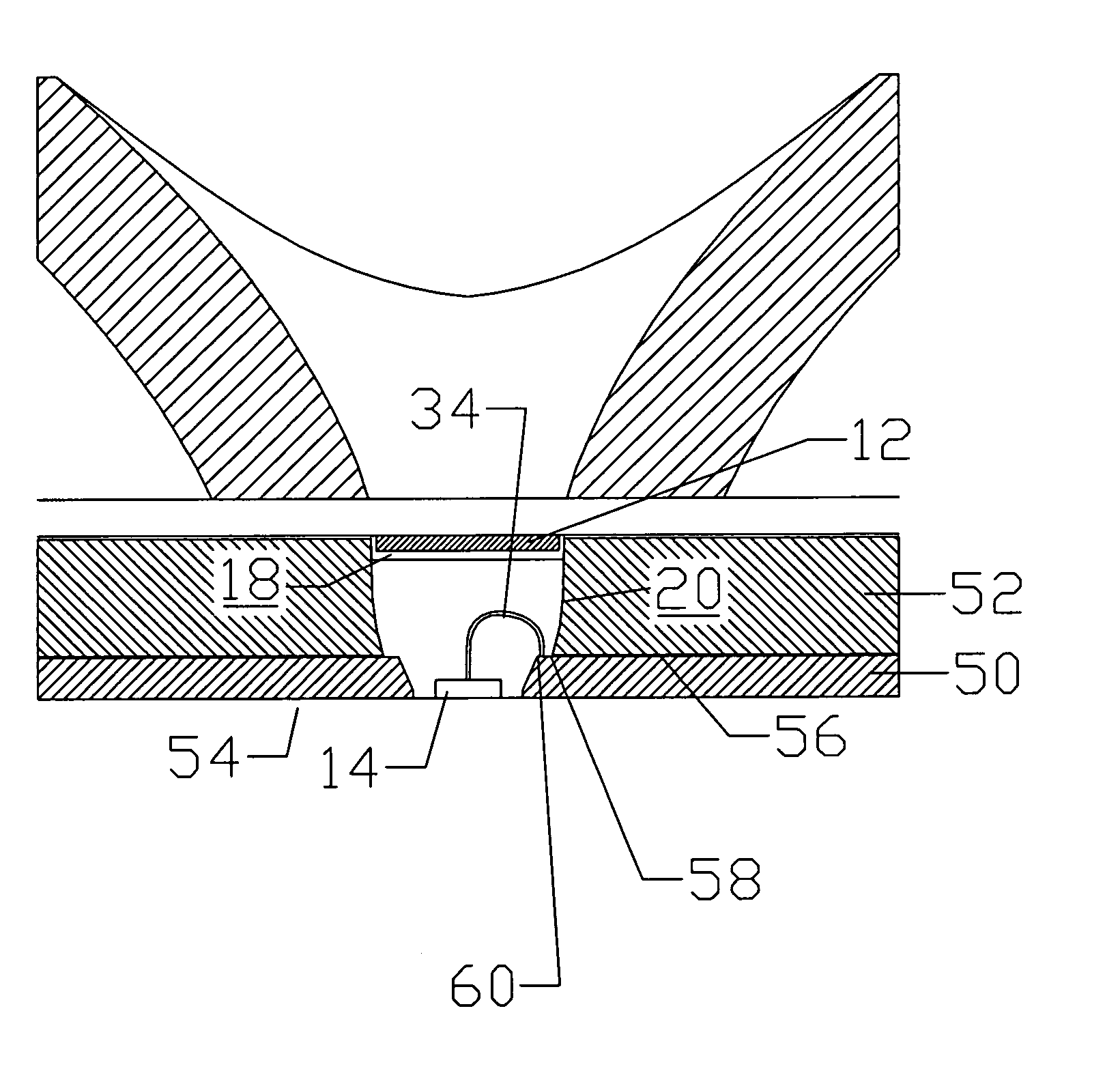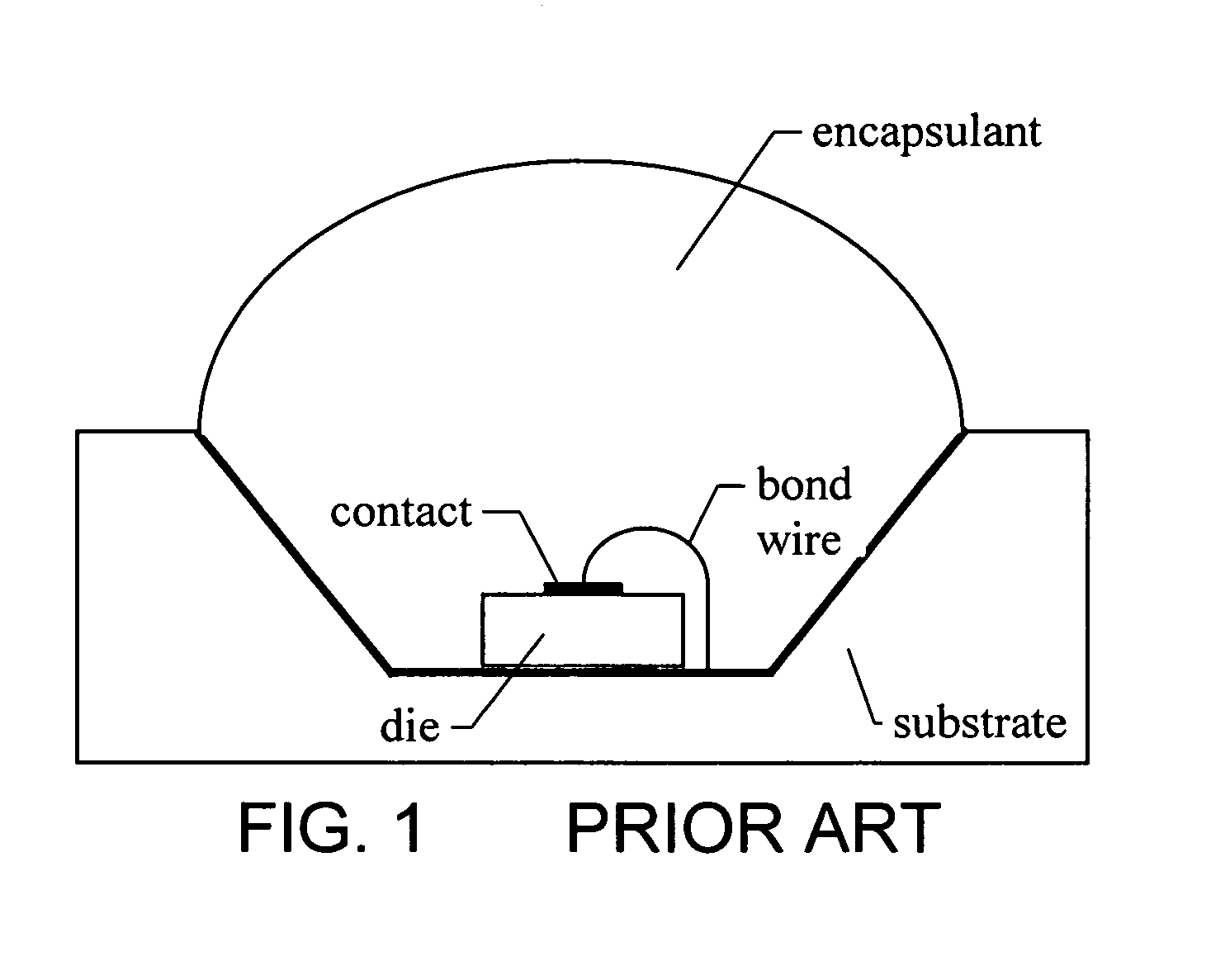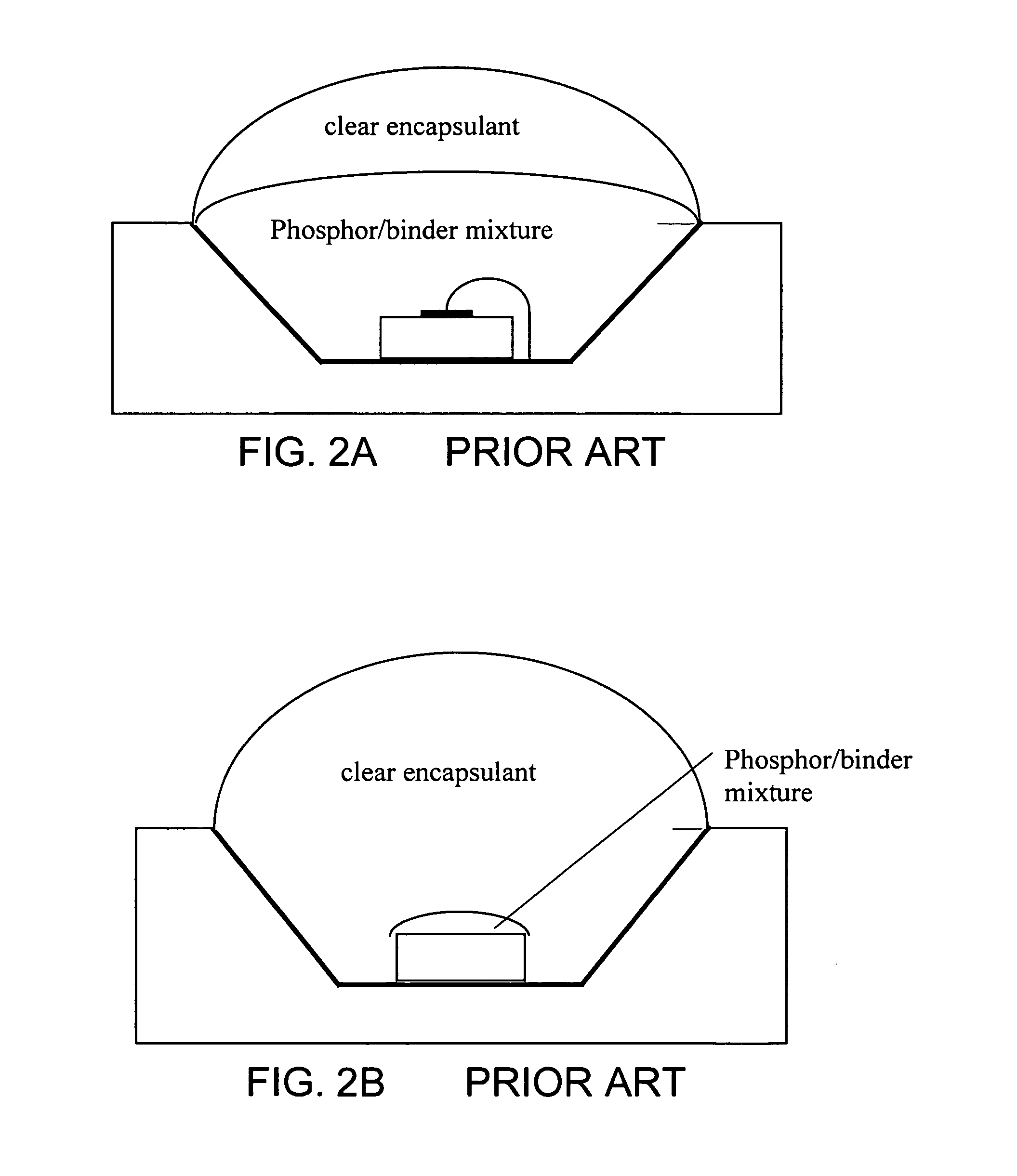High-brightness LED-phosphor coupling
a ledphosphor and coupling technology, applied in the direction of refractors, lighting and heating apparatus, display means, etc., can solve the problems of color shift, unfavorable many applications of large light sources, and decrease of light outpu
- Summary
- Abstract
- Description
- Claims
- Application Information
AI Technical Summary
Benefits of technology
Problems solved by technology
Method used
Image
Examples
Embodiment Construction
[0011]FIG. 3 shows one embodiment of the current invention, shown generally at 10. The phosphor is deposited in a layer 12 separated from the die 14 by a significant thickness of clear encapsulant 16. The phosphor 12 is immersed in a medium 18 having an optical index n2 lower than that of the encapsulant 16. In one embodiment of FIG. 3 the medium 18 is air. The phosphor 12 spatial area is larger than the die 14, but by virtue of this lower index the phosphor layer 12 has an optical etendue comparable to that of the die 14 itself. A non-imaging optical coupler 20 collects the majority of the light from the die 14 and redirects it to the phosphor 12 while maintaining the etendue comparable to the die 14.
[0012]The non-imaging optical coupler 20 can have a variety of forms as described in many known publications and U.S. patents. The shape of the coupler 20 should redirect most of the light from the die 14 from very large angles inside the encapsulant 16 to angles smaller than the criti...
PUM
 Login to View More
Login to View More Abstract
Description
Claims
Application Information
 Login to View More
Login to View More - R&D
- Intellectual Property
- Life Sciences
- Materials
- Tech Scout
- Unparalleled Data Quality
- Higher Quality Content
- 60% Fewer Hallucinations
Browse by: Latest US Patents, China's latest patents, Technical Efficacy Thesaurus, Application Domain, Technology Topic, Popular Technical Reports.
© 2025 PatSnap. All rights reserved.Legal|Privacy policy|Modern Slavery Act Transparency Statement|Sitemap|About US| Contact US: help@patsnap.com



